Domestic ferrets: characteristics, features of keeping and breeding
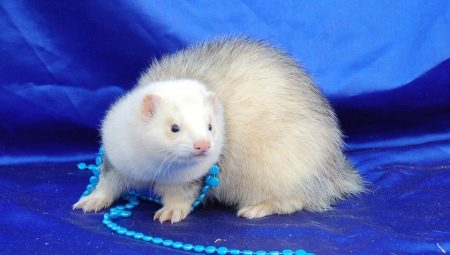
The ornamental ferret, better known to breeders as the ferret or furo, is a domesticated species of the steppe ferret. In recent years, it has become fashionable to keep him in an apartment, this is not surprising - if you know some of the subtleties, caring for such a pet does not present any problems.
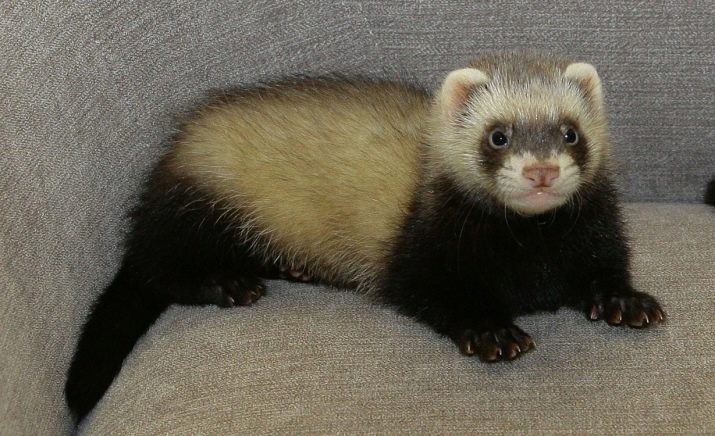
Description
Ferret is a rather nimble mammal, a distinctive feature of which is an elongated body and a long fluffy tail. The name "fretka" came to us from the Polish language, it was in this country that cell ferrets were first bred. In European countries, another designation is adopted - ferret.
Ferrets are predatory animals from the weasel family. Their elongated body reaches 40 cm in length in females and 50 cm in males. The animal's legs are short, but very strong and hardy. Thanks to the developed muscles in the limbs, the ferret easily moves from one tree to another and digs deep holes. It is very popular with breeders due to its large fluffy tail, the length of which is 20-25 cm. Weight, depending on the variety, varies from 0.25 to 2 kg.

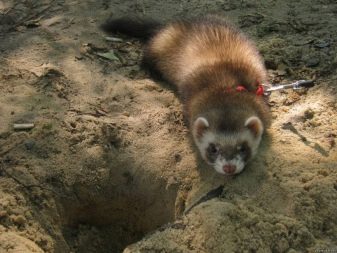
In natural conditions, animals are common in Russia, the Czech Republic, Poland, Ukraine, as well as in America and Central Asia. Certain ferret species have also been introduced even to Australia and New Zealand to combat the rapidly growing rodent population.
These are fearless and brave animals that courageously rush to snakes, moles, muskrats, although all these animals are often much larger and stronger. In previous years, ferrets were often taken to hunt - due to their dexterity, the animals quickly coped with smaller animals.
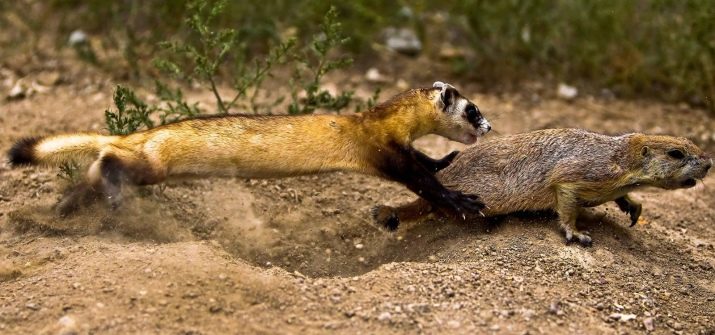
Due to its cute appearance and friendly nature, the animal has been bred as an exotic pet for many decades. Domesticated ferrets took a lot from their wild ancestors, primarily their appearance, character, habits and color. Despite the fact that ferrets are pets, they prefer to lead a nightlife. In the daytime, the ferret loves to sleep, and closer to night it wakes up and begins to be awake.
Future owners should definitely be prepared for such a feature of the animal.
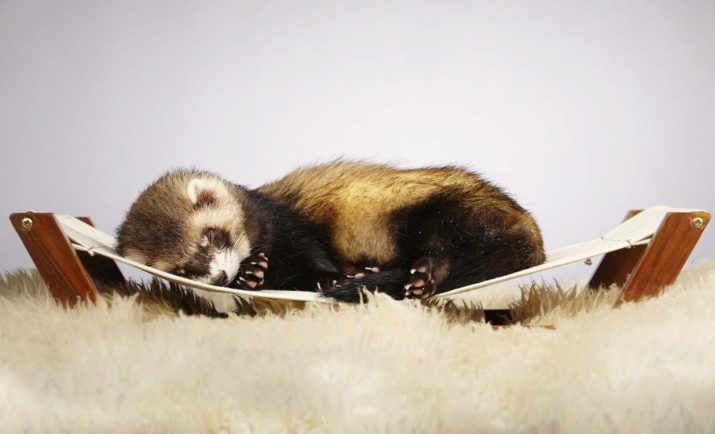
In their natural habitat, ferrets dig deep burrows, and their domestic species inherited the same habits. If you have a lot of indoor potted plants in your house, then most likely your pet will take the opportunity to rummage through all the pots of plants.
Wagons have a rather flexible body, so they can penetrate even very narrow slits, but they are often unable to get out of there - this can pose a threat to the life of a pet, therefore it is better to keep a ferret in captivity in a rather spacious aviary without the possibility of self-walking in your absence.
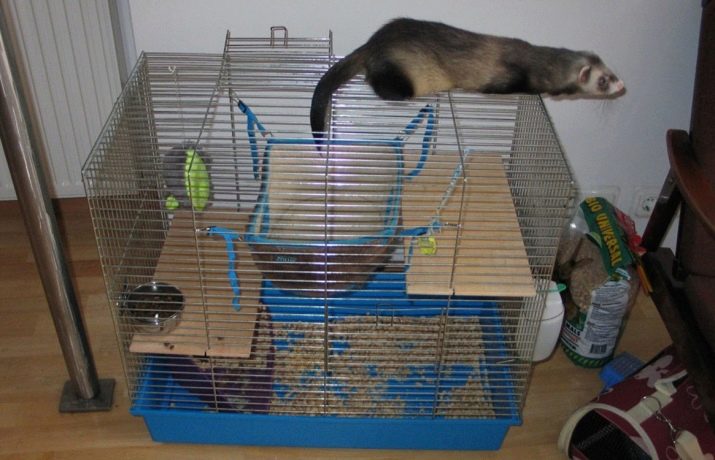
The following popular ferret colors are distinguished.
- Sable - This is the most common color of the animal. Usually the tails and limbs are painted in dark tones, the body is lighter, beige. A distinctive feature of such animals is black circles near the eyes.

- Champagne - this color is formed by a combination of tones of milk and light chocolate. Their eyes usually have a shade of pomegranate, and a nose is soft pink. It is these ferrets that are most often raised at home.
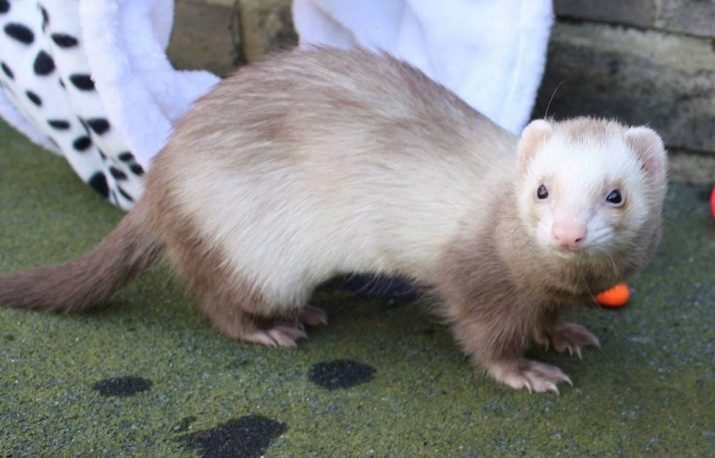
- Pastel - here many shades are allowed at once - from light to dark, but the main tone is still white. The nose is brown or pink, the eyes are dark coffee, almost black. In the wild, such ferrets are widespread, but in captivity they are quite rare.
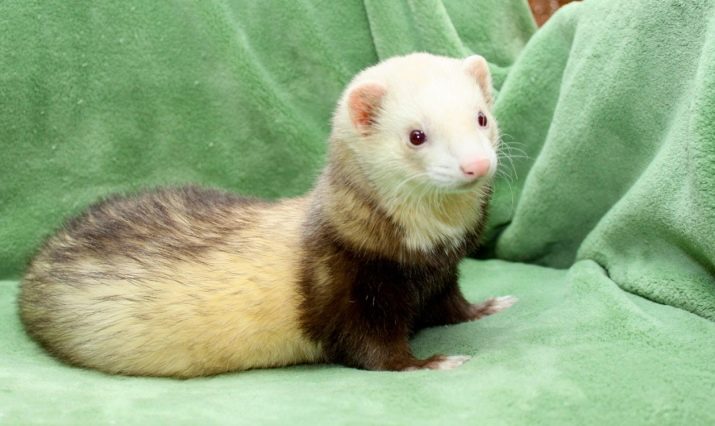
- White - These ferrets resemble albino animals in their appearance, but only in the color of their fur. Such animals usually suffer from deafness, but their cost is much higher than all other varieties, which, however, does not affect the popularity of animals of this color among breeders.

- "Cinnamon" - Another common ferret variety for home breeding, the awn in this case is brownish, but the hair darkens closer to the tail. The eyes are usually maroon, but can be brownish-pinkish.
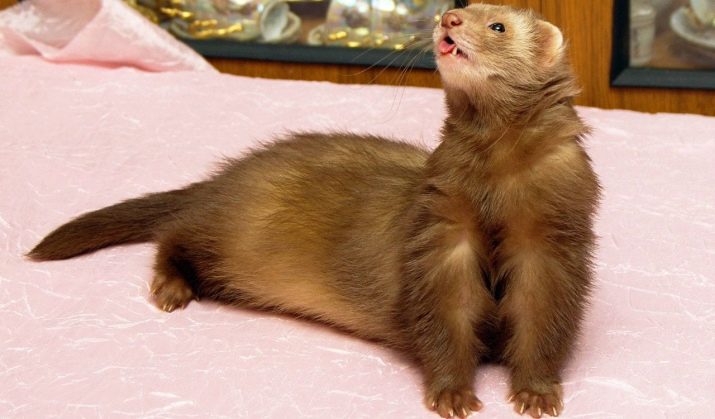
- Silver - This animal is characterized by a beige coat with gentle tints of grayish shades. The color is very rare, so such animals are highly valued among experienced breeders.

- Panda - one of the most exotic species. These ferrets resemble giant pandas in appearance: they have a white body, dark legs and an almost black tail.
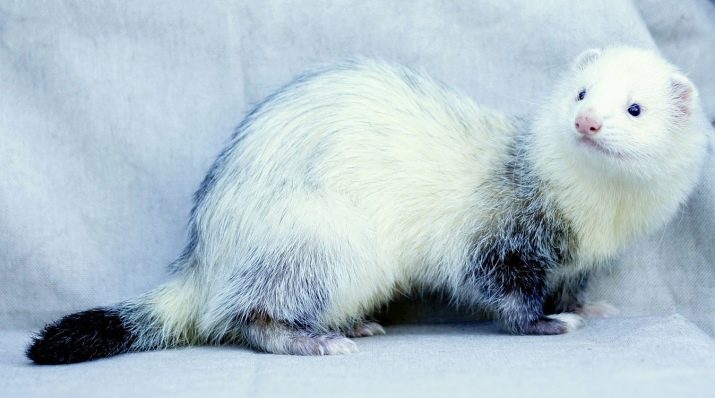
Ferrets are very active and inquisitive, and, as a rule, friendly, but at the time of puberty (about six months) and during the rutting period, their character begins to deteriorate.
At this moment, the animals become a source of a strong unpleasant odor, so the males are castrated and the females are sterilized.
If there are already other pets in the house, then the ferret will certainly become a leader in their relationship. These are rodents with high intelligence and commanding habits. Ferrets are best in contact with dogs, especially guard breeds. Often they become real friends and communicate well with each other.

But with "pocket" dogs, interaction is much more difficult - the fact is that these animals are easily excitable, therefore ferrets use it and often offend them. But acquaintance with hunting dogs can end in disaster for a ferret - they can perceive her as prey and even kill her.
Relationships between ferrets and cats can develop in the most unpredictable way - there can be great friendship, and absolute indifference and aggression.
The relationship of the ferret with rodents and birds is quite risky - in the wild, such animals become the ferret's prey, so at home it is better to keep the cages out of the reach of the ferret.
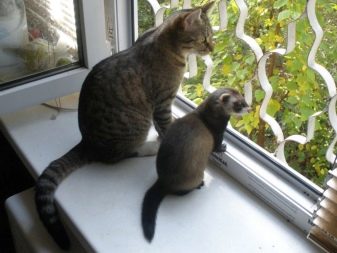
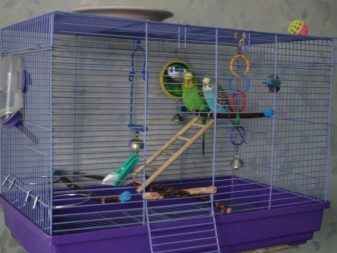
There is no need to have ferrets in families with young children - the fact is that fluffy pets have very sharp teeth and claws and they can harm the baby. Children often accept new pets as new toys, and if dogs and cats can tolerate such actions stoically, then ferrets will definitely react with aggression and anger.
If your children have grown up a little, then this unusual pet will pose absolutely no danger to household members. - in comfortable conditions, it is no more dangerous than an ordinary cat.
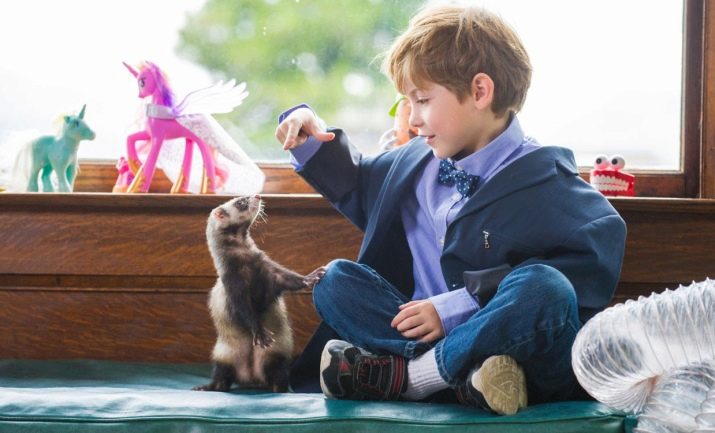
Advantages and disadvantages
Keeping ferrets has many advantages.
- These pets very quickly become accustomed to the litter box, and all caring for them is reduced only to periodic cleaning of the cage and washing the bedding.
- While communicating with a person, the ferret quickly learns its name, learns such concepts as "good" and "bad".
- Both children and adults love tamed animals - they are quite soft and very playful. Ferrets are very original in their entertainments - during the games they bizarrely jump and adore rustling packages, in summer they tumble in dug holes, and in winter they make tunnels in the snow.
- Ferrets are adapted to a wide variety of conditions, they can walk in any weather and can be bred in different climates.
- The animal is extremely unpretentious in food - they can eat both specialized feed and receive food from the common table.
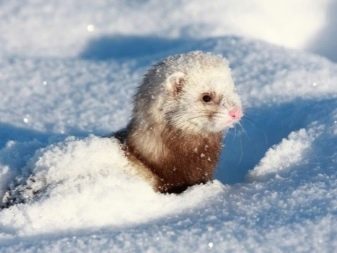
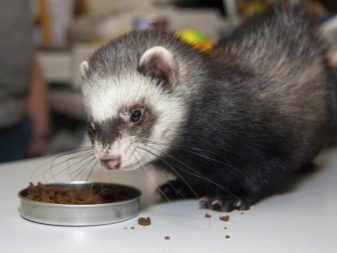
Since we are talking about responsibility for the animal, before you buy a new pet, you should weigh the pros and cons well.
Despite the abundance of pluses, the owners of such an animal face many difficulties that you need to know about in advance.
Keep in mind that this is a very sociable and sociable animal that requires constant attention from its owner. To maintain mental comfort and a stable mental state, the animal needs at least 3 hours of communication with the owner per day.
Think ahead of time if you have enough time. If you belong to the category of busy workaholics who do not have the opportunity to sit in front of the TV or chat with friends, then all you can give the animal is to fill in food and clean the cage. Such people are more suitable for a turtle or fish.
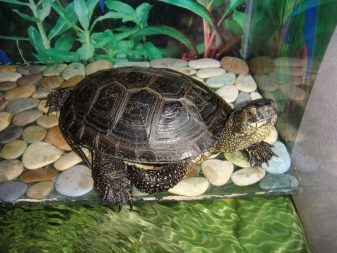
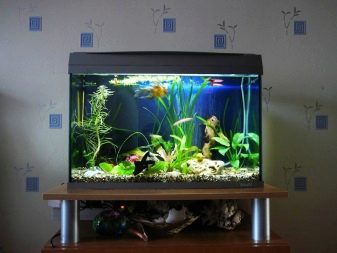
It is very important to be patient - this is an animal whose energy literally beats over the edge, it is characterized by mischief and an irrepressible thirst for activity... Any animal can spoil things - for example, a dog chews on slippers, and a cat loves to sharpen its claws on furniture, while a ferret does it all at once. You must be mentally and financially prepared for the damage that the animal can inflict on plants, furniture, toys and wallpaper.
It is important to understand that keeping a ferret is not cheap at all. The purchase of such a pet will cost a pretty penny - the cost of the animal on the market is estimated from 2 to 20 thousand. You will also have to equip a comfortable aviary for him, the price of which reaches 15,000 rubles. In addition, you will have to purchase a feeder and drinker, a variety of toys, a hammock, a sunbed, a house. You will need a carrier for visits to the veterinarian, a leash and a scratching post - this is another plus a few thousand to the expenses for arranging the pet's home.


The animal needs complete balanced nutrition, vitamin and mineral supplements that contribute to its full growth and development. Be sure to include items such as six-month vet checkups and vaccinations.
In case of illness, the average bill for treatment is about 20,000 rubles.
Obviously, ferrets are quite expensive for their owners and you should definitely be prepared for these expenses in advance.
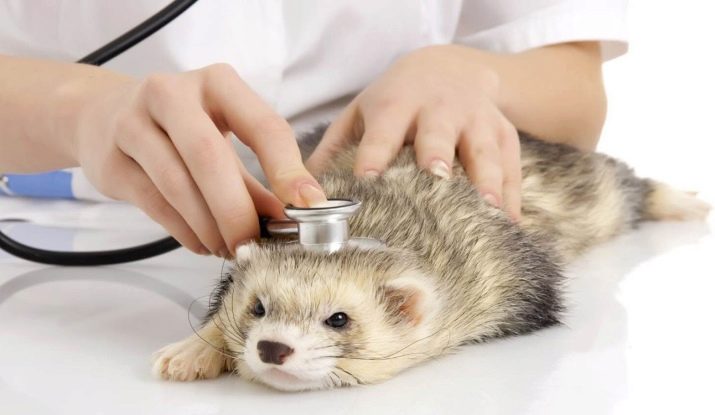
Care and maintenance
When creating favorable conditions, a ferret lives in captivity for 7-9 years - this is a pretty good time for such a small animal, and for its owner it is another reason to think about whether he is ready to take full responsibility for maintaining comfortable living conditions for an animal in an apartment ... Do not forget that we are not talking about a hamster that lives for a couple of years and at the same time spends most of the time in a cage.
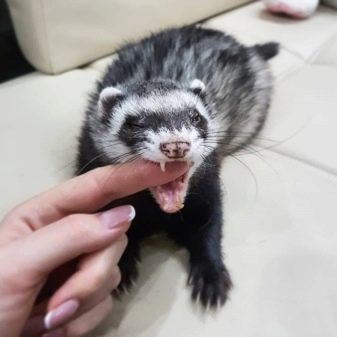
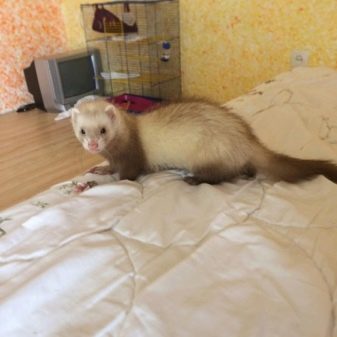
Home features
The ferret sleeps 13-15 hours a day, most often during the day. This means that at night all family members will sleep peacefully, and their pet will make every effort to prevent this, wake up its owners and attract them to active games. In order not to give him the opportunity to turn his house upside down, the animal will need a good spacious cage, best of all, an aviary, the minimum dimensions of which should correspond to 1x1x0.7 m.
So that the pet is not bored, several hammocks must be hung in the cage, in which the ferret will spend all her free time. If you have a large house or a spacious apartment, it is better to build something like a zoo enclosure - in this case, the ferret will have enough such space and the need to walk the pet will disappear completely. In such structures, it will be useful to hang ladders and ropes.
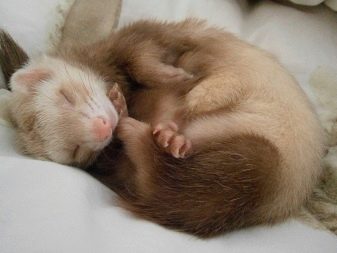

It is imperative to provide a small kennel in the home - usually it is collected from improvised means, paying special attention to the safety of the house for pussies. Inside, be sure to put mats from old, warm and very soft cloths, for example, wool and terry. It is better to buy feeders and drinkers small and at the same time durable. It is advisable to use suspended structures, otherwise an active animal can simply turn them over.
Ferrets love squeaking and whispering toys, balls, tissue cuts, teethers, and many other entertainment gadgets.
As a toilet, you can use the most common tray, like for cats, and sawdust or compressed mixtures are used as filler.

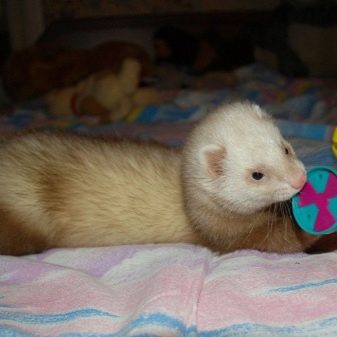
Nutrition
The duration and quality of a pet's life directly depends on its nutrition. In their natural habitat, ferrets eat birds, insects and small rodents. At home, adhering to such a regime is hardly possible, so breeders transfer their pets to ready-made feed.
It should be noted that there are no specialized foods for them, but felines are quite suitable for this.

There are 4 main types of feed - economy, middle class, as well as premium and professional mixtures. The first two categories belong to the most budgetary ones - it is undesirable for ferrets to use them, it is better to purchase more expensive products that contain all the necessary vitamins, micro- and macroelements. They also contain less fat, making them much better absorbed by the stomachs of furry pets. Preference should be given to dry mixtures - firstly, they are odorless, and secondly, they contribute to high-quality cleaning of teeth from plaque and calculus.
If you wish, you can feed the animals with natural food, most of the diet in this case should be meat - it is chopped into small pieces or ground in a meat grinder. Such food is given to ferrets twice a day, and about once every 7-10 days they supplement this mash with sea fish and chicken eggs. By the way, such feeding is not cheaper than buying ready-made formula.
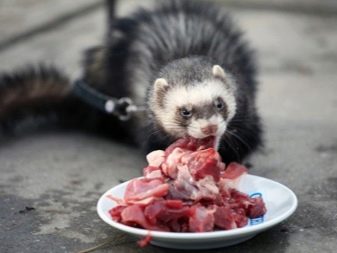
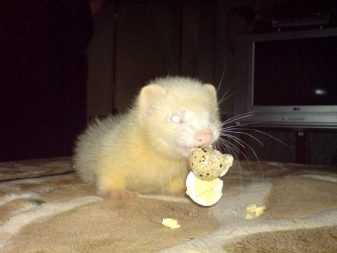
Hygiene
You don't need to bathe your ferret too often - just a couple of times a year is enough, while shampoos should be special, harmless to animals. Everyday fur cleaning is done using wipes and sprays, which can be purchased at any pet store.
Don't forget about the pet toilet. The fact is that the urine of these pets contains quite a lot of ammonia, therefore it has an unpleasant pungent odor. To prevent it from spreading throughout your home, the tray should be renewed daily.

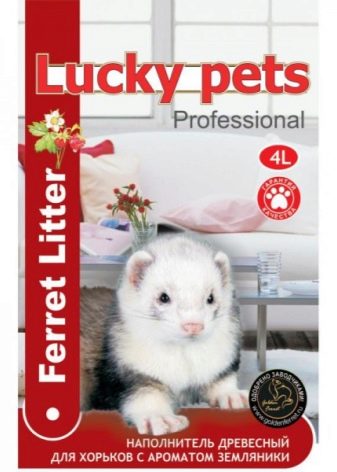
The animal requires special care during the molting period.... It usually occurs in March - then the pet sheds its long hair and remains with shortened, sparser hairs. The second molt occurs in October-early November - at this moment the hamster prepares for wintering and forms a thick coat with a dense undercoat. Shortly before the start of molting, the animal usually begins to itch very strongly, the itching often bothers the animal even during sleep. In such conditions, he will not be able to fall asleep until he gets rid of the unpleasant sensations.
Such a period usually lasts no more than 1.5-2 weeks, but it causes a lot of inconvenience to both the pets themselves and their owners. Breeders are very frightened when they notice small blue spots on their pets - but let it not scare anyone, thus new fur “paves the way” for ferrets. During this period, the animal needs vitamins, then changing the fur coat will be much easier for the pet.
If necessary, you can give your rodent an antihistamine.
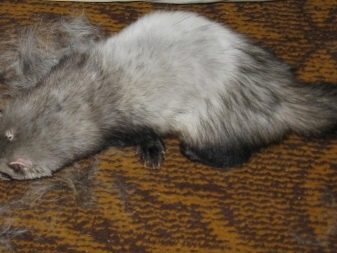

Breeding
Breeding ferrets usually begins with the correct selection of animals. It is best to cook the largest individuals for mating without signs of illness. It is better to take animals from different nurseries and different families - crossing between relatives gives unfavorable results and the cubs are born weak and sick.
Female ferrets are able to give birth several times a year, and there is no framework that defines a specific hunting period. During breeding, the female becomes quite aggressive, often begins to rush around the enclosure - it is at this moment that an adult male needs to be planted with her, all the rest of the animals will already be done without the participation of their owners.
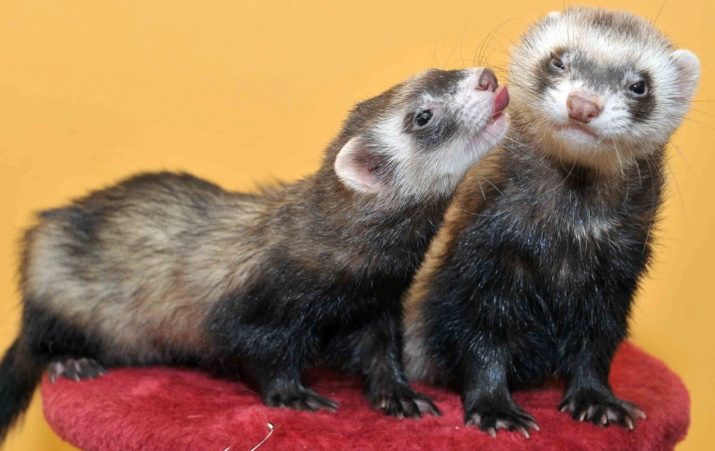
Females bear cubs for about 40-42 days. As labor approaches, their mammary glands swell and begin to increase in size. Typically, each female gives birth to 3-10 cubs.
During pregnancy, special attention should be paid to the quality of the feed, and in the fourth week, the portions should be increased by 2-2.5 times.
Childbirth is easy and does not require human intervention - wild genes allow the female to cope with everything on her own. However, if they last more than 12 hours or are accompanied by the release of a strong unpleasant odor - you should immediately contact your veterinarian, otherwise there is a high risk of death of the mother and her puppies.
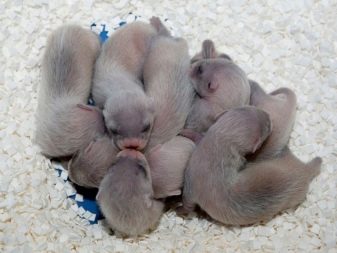
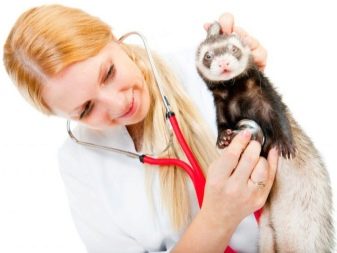
In the first month, the young are breastfed. If you feed the new mother enough, she herself can cope with feeding all of her 10 cubs. After a month, you can gradually transfer it to special feed or finely chopped natural food.
If you do not plan to breed ferrets, then the female is best spayed. - at the time of the hunt, she is extremely aggressive and if she cannot get a male, then soon she stops drinking and eating, falls into apathy. This is accompanied by hair loss, sometimes even to alopecia.
Males not intended for breeding are castrated... If this is not done, they will begin to mark everything and residents will have to face such a problem as unpleasant odors in their own home, which are quite difficult to get rid of.
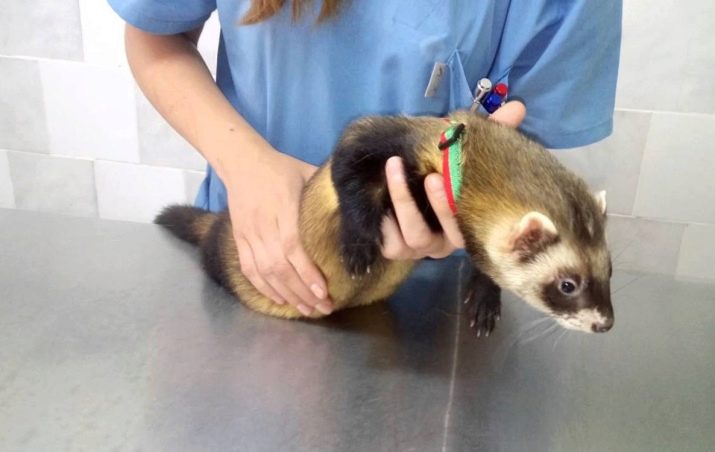
Diseases
Ferrets are naturally highly immune, but they are susceptible to certain diseases nonetheless.
Among infectious diseases, the greatest danger is plague and rabies, for which there is no medicine and the affected animal dies, therefore, even in childhood, kittens should be given vaccinations.
Viral plasmacytosis is considered an equally complex pathology. This disease affects the central nervous system, and there is no vaccine for this disease.
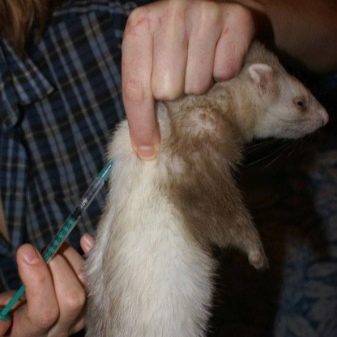

Non-communicable diseases include the following.
- rickets - most often this problem is faced by young animals that do not receive a balanced diet;
- vitamin deficiency and hypovitaminosis - another problem caused by errors in the feeding system of the animal;
- aplastic anemia - usually manifests itself in females during estrus in the absence of mating;
- gastroenteritis- ferrets face this problem if the feed contains too much plant food;
- stones in the kidneys - another consequence of an overabundance of the plant component in feed;
- congestive cardiomyopathy - pathology of the cardiovascular system caused by a lack of taurine in the body;
- stomach ulcer - becomes the result of stress and mistakes in the organization of food;
- urocystitis - occurs as a result of hypothermia of the animal;
- cataract - most often old or previously injured pets encounter it;
- prostate cyst - castrated males, whose age exceeds 2 years, face this ailment;
- tumor processes, including oncological.
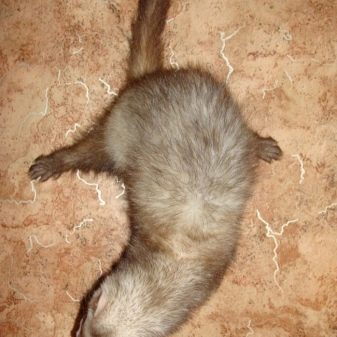
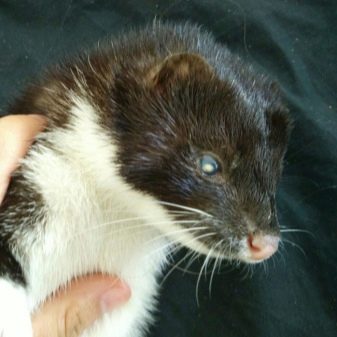
Often, animals suffer from parasite infestation:
- ear mites - transmitted from one sick pet to another, for people they are not infectious;
- fleas - most often, the ferret is attacked by human lice, as well as cat or dog fleas.
Reviews
Feedback from breeders suggests that ferrets are kind but overly active pets. It is best to purchase them at the age of 2-3 months. During this time, they completely switch to adult food, and in addition, the mother teaches them to basic survival skills. This makes it much easier for them to adapt to a new place.
When buying an animal, special attention should be paid to its appearance. - the coat should be smooth, shiny, the appearance of bald spots is undesirable. The nose should be damp and the eyes clean. The animal should be moderately well-fed and active enough.
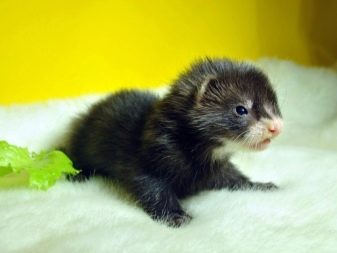
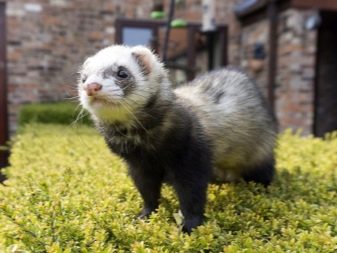
For people who do not have much experience in caring for pets, it is best to take a female into the house. The difference is that girls are more obedient and docile, much smarter and more intelligent than males. The feedback from the breeders emphasizes that female ferrets get used to a new home faster, get used to the litter box and explore new territory in a short time.
Domestic female ferrets can be a real friend, funny and very intelligent.
These animals are big fidgets, they are in constant motion, they literally need to stick their nose into every crack, try and feel everything with their paws.
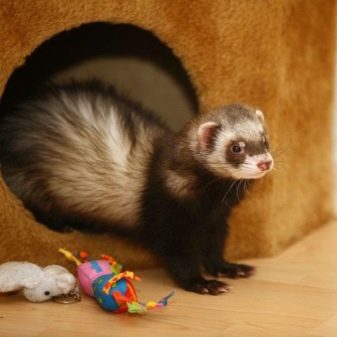

Males are more imposing, sedate, they are calmer and more firmly attached to their master.
The male is more attracted to the person of the owner than to the territory, so on a walk they will often spin around you, but do not be too happy - ferret boys rarely go into their arms, allowing such an appeal very rarely and then according to their mood.
For details on the care and maintenance of a pet ferret, see the following video.





